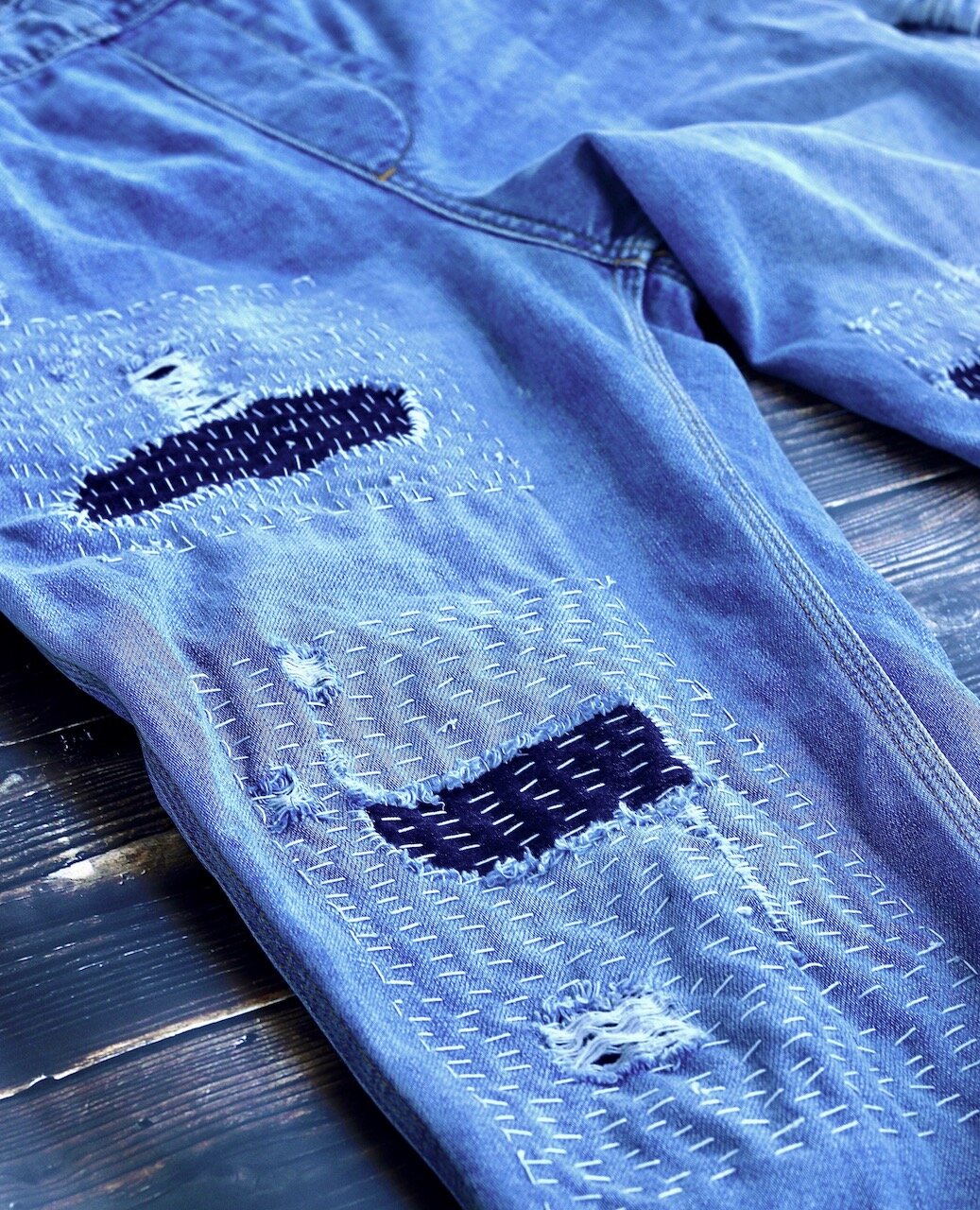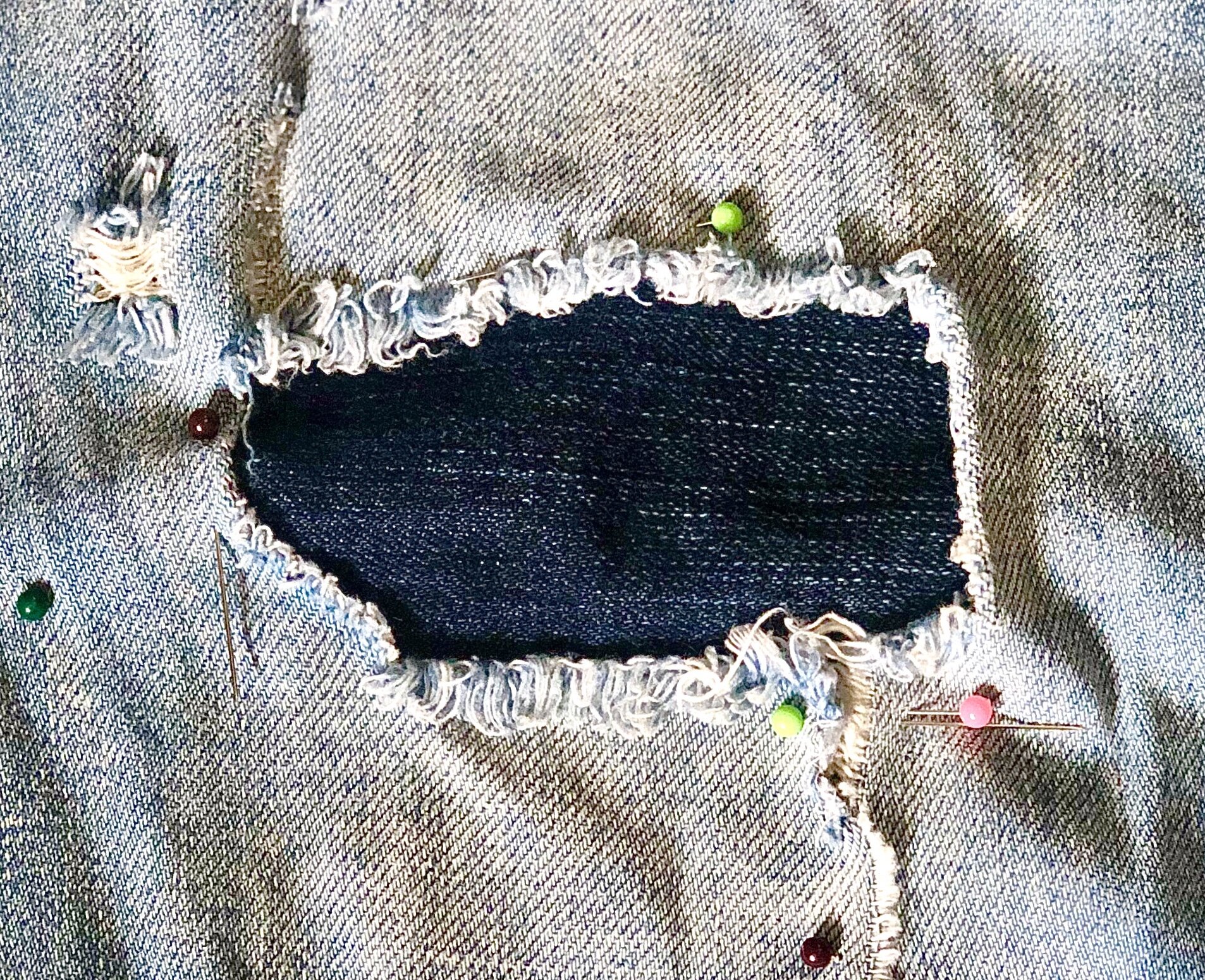The Japanese Art of Mending
How can mending our clothes help save the environment?
Fast fashion brands make clothes that will eventually go out of style, lose shape, or fall apart quickly. This forces the consumer to buy new clothes, more frequently. In order for these companies to get richer, they have to keep this twisted cycle going. The pressure for companies to produce cheaply, means that they often don’t pay their factory workers fair, or even minimum wages. Garment workers are often forced to work extreme overtime hours and are often vulnerable to poor working conditions. Fast fashion is also devastating to our planet’s environment; the excessive textile production needed to keep up with new clothing results in overwhelming CO2 and greenhouse gas emissions. In addition to polluting the air, the fast fashion industry is the second-largest consumer of the world's water supply, while also polluting the oceans with microplastics.
This is what sparked my interest in more sustainable fashion, and where my Sashiko inspired journey began.
What is Sashiko?
Sashiko, meaning “little stabs” is a traditional Japanese style of hand stitching to repair textiles by creating small repeating stitches to form a pattern. In this cultural style of mending, there is much consideration in the repair of the garment. This unique method celebrates each article of clothing’s unique history, by emphasizing its repairs, instead of hiding or disguising them. Sashiko often makes the repaired piece even more beautiful than the original, revitalizing it with a new look and giving it a second life.
Sashiko is a style of visual mending.
I have found that creativity is inspired by taking a loved piece of clothing that needs to be repaired, and spending time with that garment, looking closely at the rips. By studying the fabric, the style of mending needed often reveals itself. Mending can be an opportunity to make garments beautiful and more personal, allowing space for creative expression.
“Start where you are. Use what you have. Do what you can.”
-Arthur Ashe
I love this quote by Arthur Ashe. I use it a lot, for life in general. But especially during a global pandemic, we need to give ourselves permission to simply do the best we can, with what we have. That being said, many of these materials can be substituted for other materials you may already have on hand. Sashiko thread and needles work wonderfully for mending clothes, but embroidery thread and needles will also work. Use what you have, and give yourself credit if you are trying to learn something new!
You Will Need:
· Sashiko thread or embroidery
· Sashiko needles or embroidery needles
· thimble (optional)
· small pieces of organic fabric (linen, cotton, or denim)
· ruler (optional)
· scissors
· beeswax (optional)
Steps to get started:
Before I start any denim mend, I cut off all of the excess strings and fluff, leaving a clean denim edge. This often makes the rips appear much larger, so make sure not to cut your patches until you have cut away all of the damaged denim.
Pick out your fabrics. Cut them in a shape that is at least an inch larger, than the opening in the fabric, on all sides. Insert the piece of fabric into the leg of the jeans.
Align the fabric under the opening/hole that needs mending. Pin the fabric into place - secure the patch by pinning all the way around the hole. You can start stitching in any pattern or direction. Here, I’ve chosen to stitch vertically – so a ruler and disappearing fabric chalk can help guide that first line of stitching. Or you can wing it! Imperfection is part of the mending beauty, in my opinion.
Helpful Tip - when stitching through multiple thick layers like denim, the key is a very sharp, substantial, long sashiko needle, and beeswax! The beeswax coats the thread, and helps it to move through the fabric.
Experienced stitchers, quilters, embrioderers, and textile artists can apply more advanced stitches to mending projects if desired. But these “Stay At Home” projects are designed to be accessible and enjoyable, while allowing for creative opportunity to mend clothing . So, for this beginner lesson on mending, the “Straight Stitch” is the only stitch we will need. But you may find that you want to explore the “Running Stitch” using traditional Sashiko needles and thread.
The Straight Stitch is a basic stitch that allows for a lot of versatility. You can easily stitch in any direction to make a row of straight stitching – vertical, horizontal, or diagonal lines. You can also easily change directions between stitches. This is an individual stitch that comes up from underneath the fabric and inserts back into the fabric - about ¼ inch away. The stitch length will vary from person to person, but I like to keep my straight stitches around this size to prevent the occasional snagging, or pulling a stitch with a set of car keys or anything that might catch a larger stitch by accident.
The Running stitch is a collection of straight stiches that utilizes the length of the traditional Sashiko needles and the strong 100% cotton Sashiko thread. Instead of making one stitch each time you insert the needle, you can load the barrel of the needle with three to five stiches at one time, resulting in a short line of stitches. The Running Stitch really maximizes the length of long Sashiko needles, and can help cover larger surface areas of fabric in less effort. YouTube is your friend for learning these techniques and for getting ideas for mending.
Please be kind to yourself: makers, thrifters, designers, and artists. Especially, if mending is a new skill, like it was for me. Remember the wonderful quote by Arthur Ashe and recognize that you have everything you need to start your more sustainable fashion journey right now, using what you already have, and simply do what feels possible today. At every step along the way there are opportunities to engage in empathy, expand our connection, and begin to heal what is broken, even if that means mending our beloved blue jeans. Here’s my motto: just begin, and trust the process.






